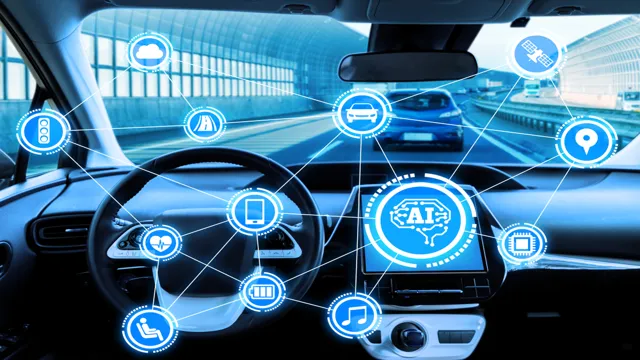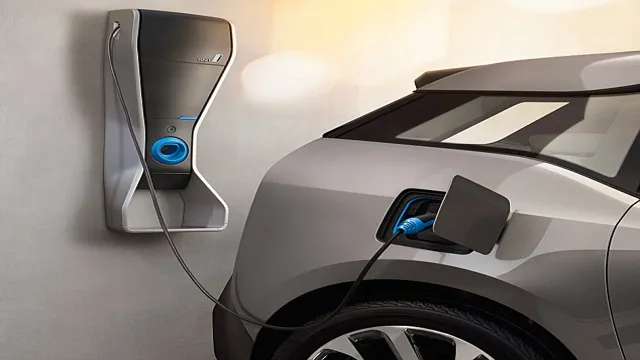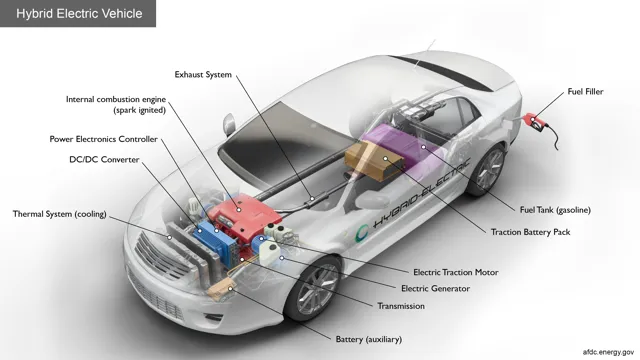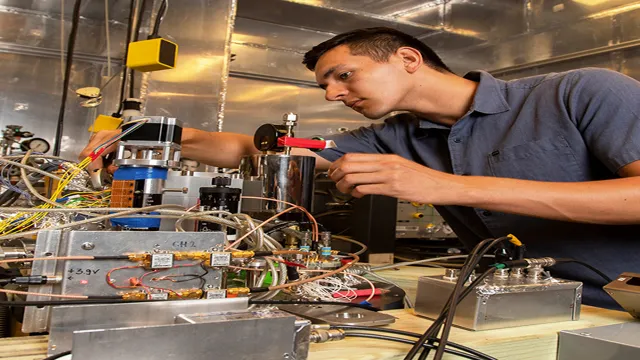Revolutionizing the Road: The Latest Advances in Electric Car Technology
Electric cars have come a long way since their inception in the late 1800s, and the advancements in technology just keep getting better. From battery range to charging speed, the electric car industry has made significant strides in recent years that have made them more appealing than ever before. With the rise in demand for environmentally friendly and sustainable vehicles, it’s no wonder that electric cars are becoming more and more popular.
In this blog post, we’ll delve into some of the latest advances in electric car technology, from faster charging times to more efficient batteries, and explore how they’re shaping the future of the automotive industry. So buckle up, and let’s take a ride through the latest and greatest in electric car tech!
Battery Technology
Thanks to recent advances in electric car technology, we have seen great strides in the design and innovation of battery technology. One significant area of improvement is with battery life. Today’s electric cars can drive farther than ever before, with some models achieving over 300 miles on a single charge.
Furthermore, rapid charging technology is increasingly common, with some EVs capable of charging up to 80% in as little as 30 minutes. Overall, these advances continue to make electric cars more practical and accessible for drivers around the world. As we continue to push the limits of battery technology, we can only expect more impressive developments and a brighter future for electric vehicles.
Solid-State Batteries: A Game Changer
Solid-state batteries could be the game changer we need in the world of battery technology. The traditional lithium-ion batteries used in most of our electronic devices rely on a liquid electrolyte to transport ions between the anode and cathode. However, solid-state batteries use a solid electrolyte, which allows for higher energy density, faster charging times, and better safety.
They also have the potential to be more environmentally friendly, as they can be made without harmful metals like cobalt. While solid-state batteries are not yet widely available, researchers are making significant progress in developing this technology. The advancements being made in solid-state batteries could revolutionize the way we power our devices and possibly even our cars.
It is exciting to see what the future holds for this emerging technology, and how it could shape our world.
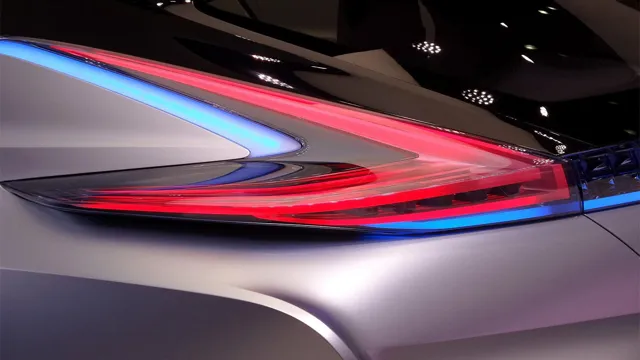
Charging Speed and Convenience
When it comes to charging speeds and convenience, the technology behind batteries plays a crucial role. While traditional lithium-ion batteries are still widely used, newer technologies such as solid-state batteries and flow batteries are being developed to offer faster charging times and increased storage capacity. Solid-state batteries, for instance, use solid electrolytes instead of liquid ones, which allows for quicker charging without the risk of leaking or explosion.
Additionally, flow batteries employ special electrodes that can be charged and discharged simultaneously, providing near-instant recharge times. As these newer battery technologies become more widely available, consumers can expect faster charging times and increased convenience in their daily lives. However, it’s important to note that these technologies are still in the development stage and may not be widely available for some time.
Nonetheless, it’s exciting to think about the potential advancements in battery technology and how they can improve our charging experiences.
Motor Efficiency
Advances in electric car technology have resulted in improved motor efficiency. Electric motors are highly efficient, converting 75-90% of the energy they consume into mechanical work. However, there is always room for improvement.
Modern electric cars now use advanced motor designs, such as permanent magnet motors and induction motors, which offer even higher efficiency levels than older technologies. For example, permanent magnet motors can achieve efficiency rates of up to 97%. Additionally, the use of advanced materials such as carbon fiber and aluminum alloys in motor design has reduced weight and increased power density, further improving efficiency.
With continued innovation, electric vehicle technology will only become more efficient, helping to boost range and drive adoption of electric vehicles worldwide.
Increasing Power Density
As technology advances, engineers are consistently striving to increase power density in motors while maintaining or even improving their efficiency. One key factor in achieving this goal lies in the efficiency of the motor itself. The more efficient the motor, the less energy is lost as heat, and the more power can be delivered to the target device or application.
Modern motor designs incorporate advanced materials and innovative technologies that not only increase efficiency, but also reduce the motor’s weight and size. This allows for higher power density while making the motor more compact and easier to integrate into systems and devices. Overall, improved motor efficiency is a crucial component in increasing power density and creating more powerful and efficient machines.
Using Rare Earth Metals
Rare earth metals are playing a significant role in improving the efficiency of motors. These metals, such as neodymium, dysprosium, and praseodymium, are essential components of permanent magnets used in electric motors. Unlike conventional motors that use electromagnets to produce motion, electric motors with permanent magnets offer higher efficiency and greater power density.
Permanent magnets help reduce energy loss caused by eddy currents, resulting in motors that are up to 97% efficient. However, permanent magnets require rare earth metals due to their high magnetic strength. It is essential to use these metals wisely and sustainably because they are costly and come with environmental concerns.
Therefore, researchers are working to develop new materials that reduce the reliance on rare earth metals in motor manufacturing while producing high-performing electric motors.
Autonomous Features
Advances in electric car technology have brought about many improvements in the driving experience, including the integration of autonomous features. These features allow the vehicle to carry out certain tasks without the need for intervention from the driver. For example, some electric cars are equipped with lane departure warning systems, which use cameras and sensors to detect when the car is drifting out of its lane and alerts the driver.
Another useful feature is adaptive cruise control, which adjusts the car’s speed based on the distance from the vehicle in front of it, helping to maintain a safe following distance. Additionally, electric cars can be equipped with parking assist technology, which scans the area for an available parking space, and automatically steers the vehicle to the open area. These advances not only make driving safer but also make it more convenient for drivers, showing how electric cars are paving the way for the future of automotive technology.
Self-Driving Cars
Autonomous Features Self-driving cars are becoming increasingly popular with the advancement of autonomous features. Autonomous Features enable vehicles to perform crucial functions without human intervention. Some of the self-driving features in cars today include automatic lane-changing, cruise control, automatic emergency braking, and self-parking.
However, autonomous features go beyond these features to include advanced driver assistance systems, such as night vision which uses infrared technology to detect nearby objects or pedestrians and the ability to adjust headlights to suit the surrounding environment. These advanced features show great promise in making driving safer and more convenient. In the future, it is expected that autonomous features will be integrated into electric and hybrid cars, reducing carbon emissions and making driving more eco-friendly.
As the race to create the perfect self-driving car continues, it is clear that autonomous technology will change the way we drive forever.
Advanced Safety Features
Autonomous features have become an increasingly popular addition to modern vehicles due to their ability to enhance safety on the road. These advanced features include self-driving capabilities, automatic emergency braking, lane departure warnings, and adaptive cruise control. In essence, autonomous features allow the car to take over control, reducing the likelihood of human error.
For example, if a driver becomes distracted and swerves out of their lane, a lane departure warning will alert them to correct their path, preventing a potential collision. Similarly, automatic emergency braking can prevent a collision if the driver fails to respond in time. With these features, driving becomes safer, and the likelihood of traffic accidents and fatalities is minimized.
In the future, we can expect to see even more autonomous features that will help us drive more confidently and safely on the roads.
Innovative Designs
Advances in electric car technology have led to innovative designs that are changing the way we think about transportation. One example is the Tesla Model S, a sleek and luxurious electric vehicle that boasts impressive performance and range. Another is the Nissan LEAF, which features advanced safety features and is designed with the urban driver in mind.
With advances in battery technology, electric cars are becoming more affordable and practical for everyday use. For example, the Chevy Bolt has a range of over 200 miles on a single charge and is priced competitively with traditional gasoline-powered cars. As more and more people embrace electric vehicles, we can expect to see even more innovative designs that push the boundaries of what is possible with sustainable transportation.
Lightweight Materials
Lightweight materials are becoming more and more popular in innovative design. As people become increasingly conscious of their carbon footprint and want to reduce their impact on the environment, lighter and more efficient materials are becoming increasingly common across industries. Advancements in technology and research have led to more durable and stronger lightweight materials from carbon fiber and graphene.
Engineers and designers are using these materials to create vehicles, aerospace parts, and even entire buildings that require less energy to produce and generate fewer emissions. With these innovative designs, we can reduce our environmental impact without compromising safety or comfort. Lightweight materials are becoming a crucial component of modern design, and it’s exciting to see how they will shape the future of our world.
Aerodynamic Shapes
When it comes to designing aerodynamic shapes, innovation is key. Innovative designs are the driving force behind creating more efficient and effective shapes for aircraft and other vehicles. Engineers are continually exploring new shapes and designs that can help reduce drag and improve fuel efficiency.
These designs are inspired by nature, and often take cues from birds and fish. One such design is the winglet, which is a small, upturned wing located at the tip of the main wing. The winglet helps to reduce the amount of drag created by the wingtip vortices, which can result in significant fuel savings.
Another example of an innovative aerodynamic design is the shark skin-inspired surface. The skin of a shark is covered in tiny scales, or denticles, which help reduce drag and increase speed. This inspired the development of a synthetic shark skin coating for airplanes, which can improve fuel efficiency by up to 10%.
Overall, innovation in aerodynamic design is essential to improving the overall performance of vehicles and reducing their environmental impact.
Conclusion
In conclusion, the advancements in electric car technology have truly charged up the automotive industry. With faster charging times, longer ranges, and sleeker designs, these vehicles are no longer just for the eco-conscious drivers. From luxury sedans to practical hatchbacks, there’s an electric car for everyone.
And as technology continues to evolve, who knows what kind of electric-powered innovation we’ll see next. The future of driving is surely electric, and it’s sure to be electrifying!”
FAQs
What are some recent advances in electric car technology?
Some recent advances include improved battery technology, longer range on a single charge, faster charging times, and better overall efficiency.
How do electric cars compare to traditional gas-powered cars in terms of performance?
Electric cars have advanced significantly in recent years and can compare favorably in terms of acceleration and top speed. However, they still may have limitations in terms of long-distance travel.
Are electric cars more expensive than gas-powered cars?
In general, electric cars are more expensive than gas-powered cars, but this gap is narrowing as technology advances and production costs decrease. Additionally, electric cars may have lower long-term costs due to savings on fuel and maintenance.
How does charging an electric car work?
Electric cars can be charged using a home charging station, public charging stations, or fast-charging stations. The time it takes to charge depends on the capacity of the battery and the type of charging station used.
